




Next: Conclusion
Up: Guitton: Adaptive subtraction vs.
Previous: Modeling of the multiples
The goal of this section is to compare the two subtraction techniques
on the synthetic dataset. This dataset was primarily designed to
conduct blind tests for velocity estimation methods.
Consequently, no structural information is known.
The result of adaptive subtraction is shown for one offset section in
Figure 3 and the result of pattern-based subtraction is
shown in Figure 4. The adaptive subtraction is doing a
decent job everywhere. However, some multiples are still visible.
For example, '1' in Figure 3 points to a location where
multiples overlap with primaries and are not attenuated. In contrast,
the pattern-based subtraction technique (i.e., Figure 4)
seems to do a better job attenuating these events.
The same is true for arrows '2' and '5'. The diffracted multiples
(arrows '3' and '4') are also better
attenuated with the pattern-based technique.
dsign
Figure 3 Constant offset section (h=550 m) of
the estimated primaries with adaptive subtraction. The arrows point
to locations where multiples are still present.
 sign
sign
Figure 4 constant offset section (h=550 m) of
the estimated primaries with pattern recognition. Multiples are
better attenuated than in Figure 3.

Because no velocity analysis was conducted with this dataset, no stacks
are presented. Alternatively, close-ups of constant offset sections
are shown to illustrate strengths and weaknesses of the two different
approaches. Figure 5 shows a comparison between the
input data, the multiple model, the estimated primaries with the
adaptive subtraction and the estimated primaries with the pattern
recognition technique. The offset is 700 m. As shown by the arrows,
the pattern-based method performs generally better. The same
conclusions hold in Figure 6. Note in Figure
6b aliasing artifacts due to the coarse sampling of
the offset axis for the multiple prediction van Dedem (2002).
Sometimes, it can be rather difficult to see if multiples are removed
or not by simply looking at 2D planes. Figure 7c shows
one event at '2' that seems to be a primary. However, by looking at the
shot gathers (not shown here),
it appears that this event is a multiple that the pattern-based
approach was able to attenuate.
One shortcoming of the pattern-recognition technique is that it relies
on the Spitz approximation to provide a signal model if nothing else
is available. By construction, the signal and noise filters will
span different components of the dataspace.
Therefore, the estimated primaries and multiples are uncorrelated.
This simple fact proves that with the Spitz approximation, higher
dimension filters are preferred because primaries and multiples have
fewer chances to look similar.
Figure 8 shows an example where primaries are
damaged by the pattern-based method. For instance in Figure
8a, we see at '2' a primary that is attenuated by the
PEFs (Figure 8d) but well preserved by the adaptive
subtraction (Figure 8c). Here the primaries and
multiples (Figure 8b) exhibit similar
patterns. Using the Spitz approximation, event '2' is identified as
noise and removed as such. For event '3', it is quite difficult to say
if multiples are better removed in Figure 8d or if primaries are
better preserved in Figure 8c. Looking at the
corresponding shot gathers did not help to make a decision because the
multiples are very strong. Event '4' looks clearly better with the
adaptive subtraction and '1' and '5' are well recovered with the
pattern-based approach.
compwin1
Figure 5 Constant offset sections (h=700 m)
for (a) the input data, (b) the multiple model, (c) the estimated
primaries with adaptive subtraction and (d), estimated primaries
with the pattern-based approach. Arrows point to locations where the
pattern-based approach attenuates multiples significantly better
than the adaptive subtraction.
![[*]](http://sepwww.stanford.edu/latex2html/movie.gif)
 compwin6
compwin6
Figure 6 Constant offset sections (h=4550 m)
for (a) the input data, (b) the multiple model, (c) the estimated
primaries with adaptive subtraction and (d), estimated primaries
with the pattern-based approach. Arrow A points to aliasing effects due to
the offset sampling of the shot gathers. The pattern-based approach
attenuates the multiples better than the adaptive subtraction in
'1' and '2'.
![[*]](http://sepwww.stanford.edu/latex2html/movie.gif)
 compwin8
compwin8
Figure 7 Constant offset sections (h=3300 m)
for (a) the input data, (b) the multiple model, (c) the estimated
primaries with adaptive subtraction and (d), estimated primaries
with the pattern-based approach. '1' points to a primary that the
pattern-recognition preserves very well. '2' points to an event that
is attenuated with the pattern-based approach but not with the
adaptive subtraction in (c). Though not shown here, a close
inspection of the corresponding shot gathers suggests that '2' is
actually a multiple.
![[*]](http://sepwww.stanford.edu/latex2html/movie.gif)
 compwin12
compwin12
Figure 8 Constant offset sections (h=5050 m)
for (a) the input data, (b) the multiple model, (c) the estimated
primaries with adaptive subtraction and (d), estimated primaries
with the pattern-based approach. '1' and '5' show events better
preserved with the pattern-based method. '2' and '1' are better
recovered with the adaptive subtraction. '4' seems to point to a
primary that the adaptive subtraction is able to save. '3' is
undecided.
![[*]](http://sepwww.stanford.edu/latex2html/movie.gif)






Next: Conclusion
Up: Guitton: Adaptive subtraction vs.
Previous: Modeling of the multiples
Stanford Exploration Project
5/23/2004
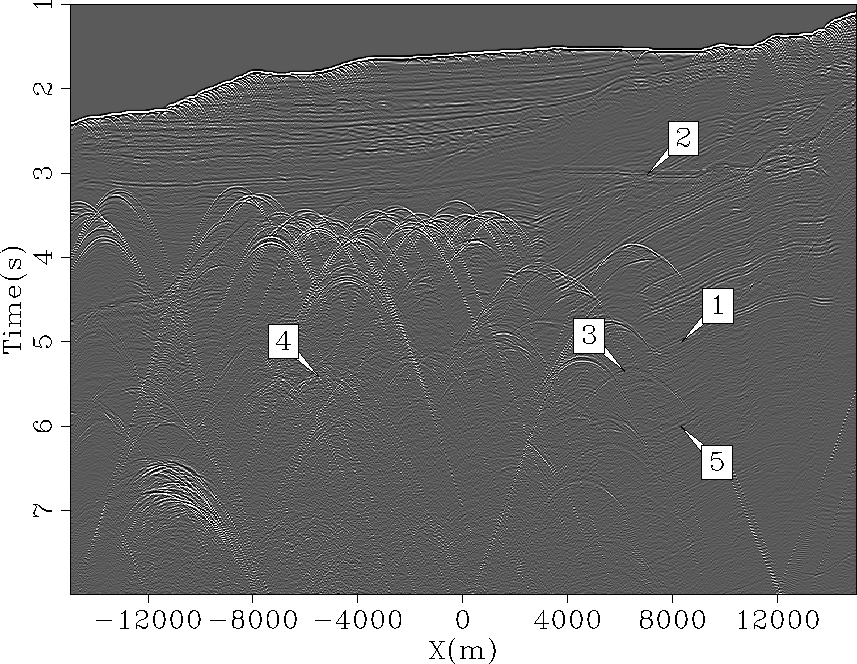

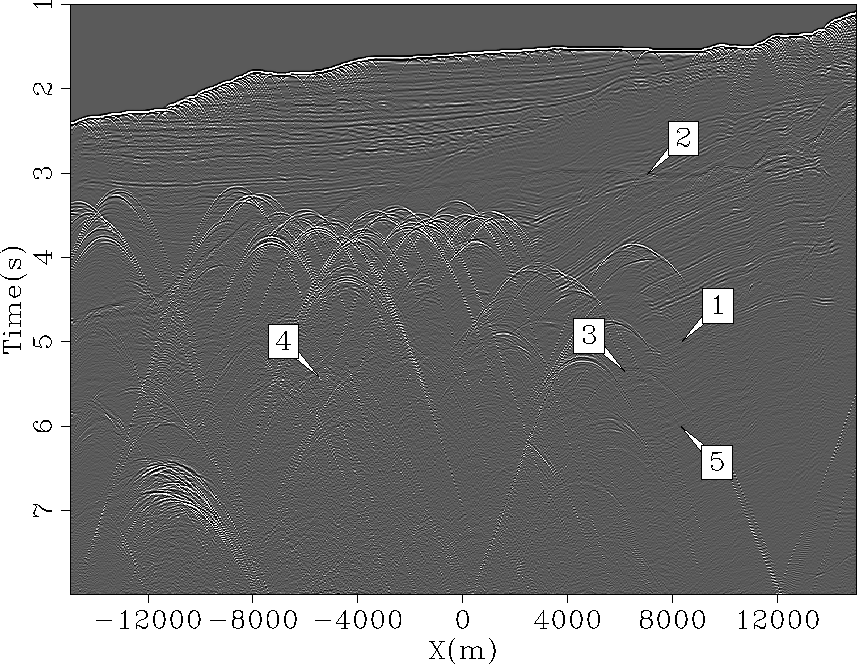
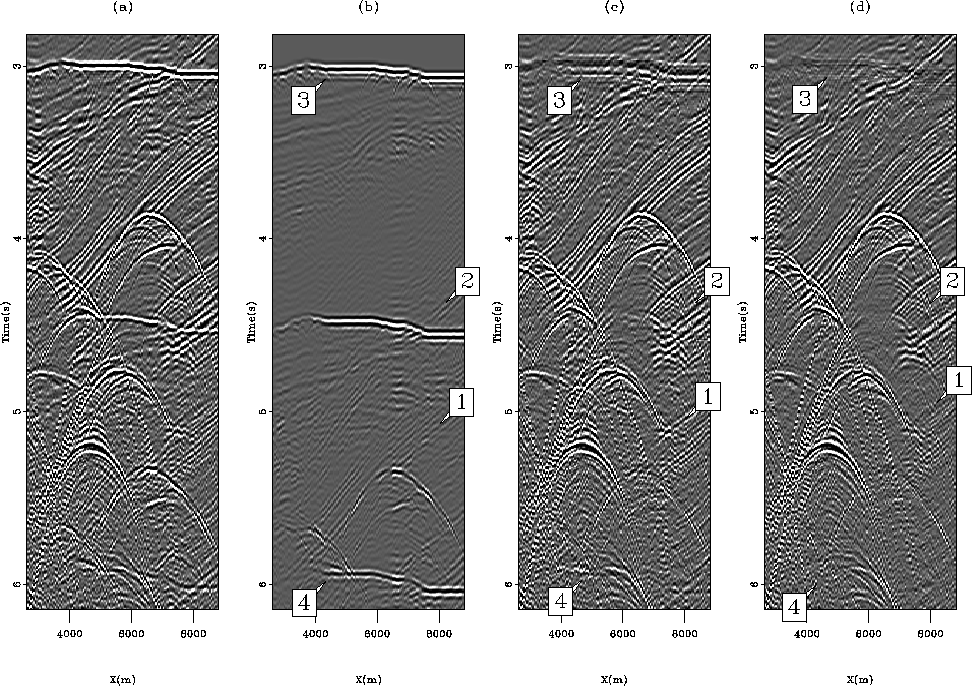
![[*]](http://sepwww.stanford.edu/latex2html/movie.gif)
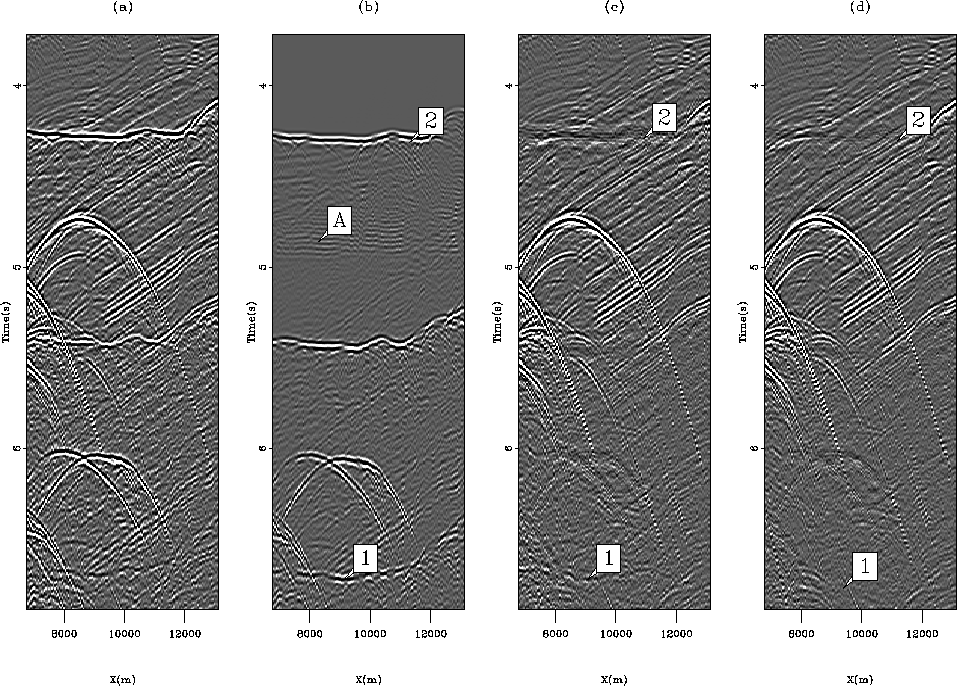
![[*]](http://sepwww.stanford.edu/latex2html/movie.gif)
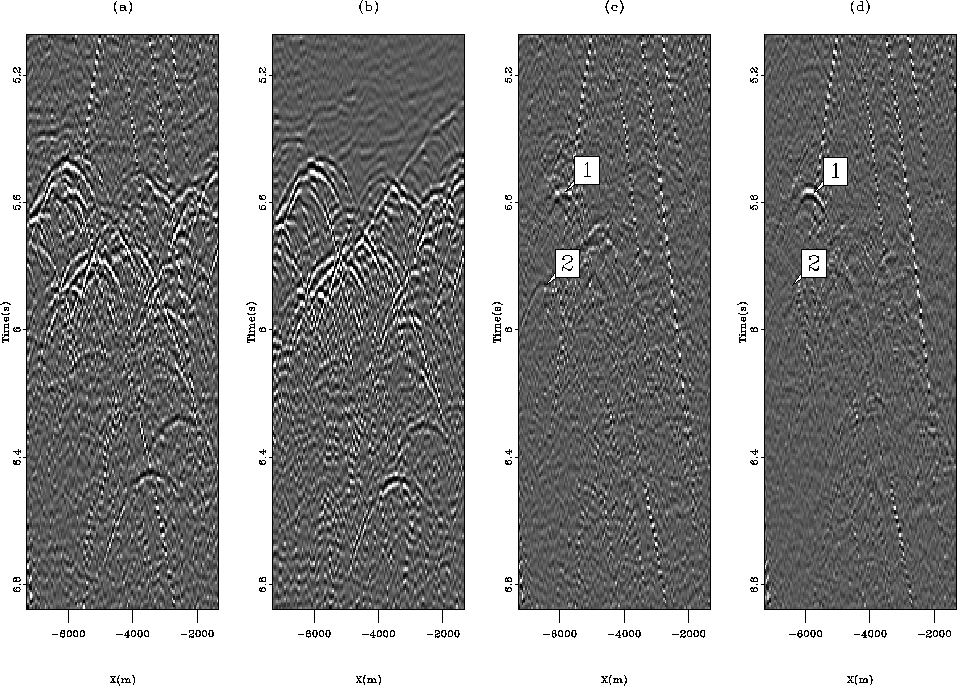
![[*]](http://sepwww.stanford.edu/latex2html/movie.gif)
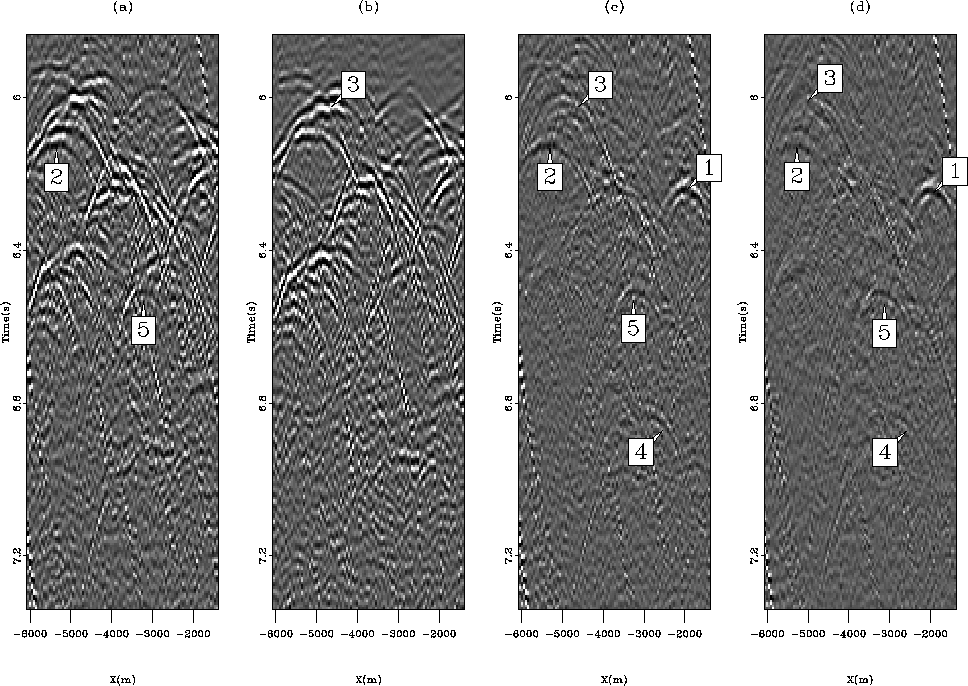
![[*]](http://sepwww.stanford.edu/latex2html/movie.gif)